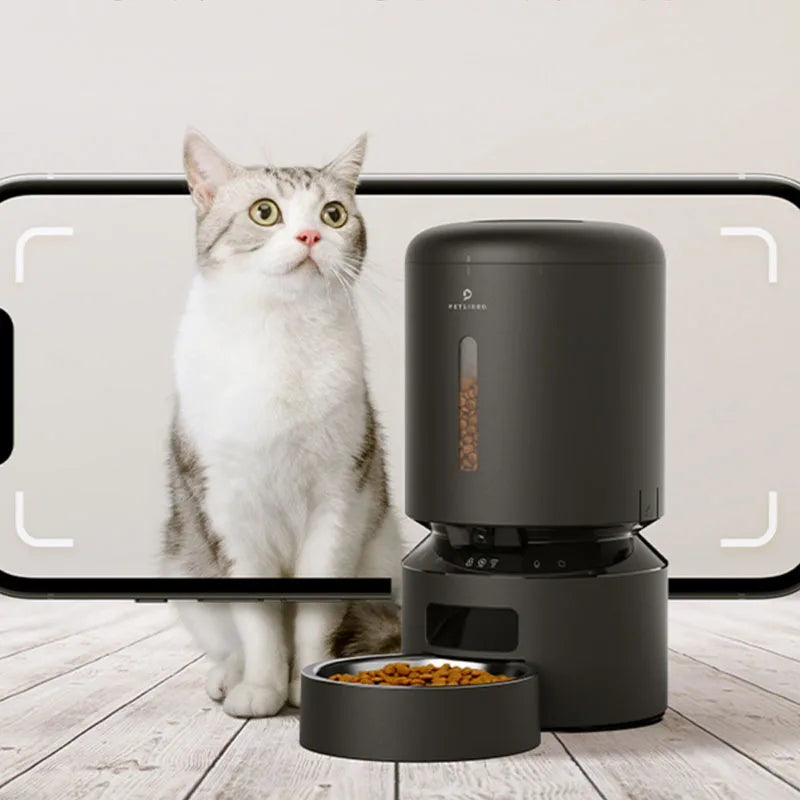
How to Choose the Right Pet Food: A Complete Nutrition Guide
Share
Introduction
Choosing the right pet food is one of the most important decisions you'll make as a pet owner. A well-balanced diet ensures your pet stays healthy, energetic, and happy. With so many pet food options available, it can be overwhelming to know what’s best for your furry friend. This guide will help you understand pet nutrition, how to read labels, and choose the right food for your pet's specific needs.
Why Pet Nutrition Matters
Proper nutrition is essential for:
- Overall Health: A balanced diet supports strong bones, a healthy coat, and a robust immune system.
- Energy Levels: The right food provides the energy your pet needs for daily activities.
- Longevity: Proper nutrition can help prevent obesity, diabetes, and other health issues.
- Digestive Health: High-quality ingredients ensure better digestion and nutrient absorption.
Understanding Pet Food Labels
Reading pet food labels is key to making an informed decision. Here’s what to look for:
-
Ingredients List:
- Look for whole, recognizable ingredients like chicken, salmon, and vegetables.
- Avoid by-products, artificial preservatives, and fillers like corn or soy.
-
Guaranteed Analysis:
- Check the protein, fat, fiber, and moisture content to ensure balanced nutrition.
- Example: A good dog food should have at least 18-25% protein content.
-
AAFCO Statement:
- Ensure the food meets the Association of American Feed Control Officials (AAFCO) nutritional standards for complete and balanced diets.
-
Life Stage Suitability:
- Ensure the food is appropriate for your pet’s life stage (puppy, adult, senior).
Types of Pet Food
Different types of pet food offer unique benefits. Here's an overview of the most common types:
1. Dry Kibble
Pros:
- Convenient and cost-effective
- Helps maintain dental health
- Long shelf life
Cons:
- May contain fillers
- Lower moisture content
👉 Shop quality dry kibble at Hzon.Shop!
2. Wet/Canned Food
Pros:
- High moisture content, great for hydration
- More palatable and appealing for picky eaters
- Rich in protein
Cons:
- Shorter shelf life after opening
- Can be more expensive
3. Raw Food Diet
Pros:
- Mimics a pet's natural diet
- High in protein and essential nutrients
- No artificial additives
Cons:
- Requires careful handling to avoid contamination
- Can be expensive and time-consuming
4. Freeze-Dried and Dehydrated Food
Pros:
- Preserves nutrients
- Convenient and lightweight
- Longer shelf life
Cons:
- Needs rehydration before serving
- Can be pricey
How to Choose the Right Pet Food for Your Pet
When selecting the best food for your pet, consider the following factors:
-
Age and Life Stage:
- Puppies and kittens need high-calorie, nutrient-dense food.
- Seniors need food that supports joint and digestive health.
-
Breed and Size:
- Small breeds may require smaller kibble, while large breeds need joint-supportive formulas.
-
Health Conditions:
- Pets with allergies may benefit from grain-free options.
- Pets with digestive issues may need sensitive stomach formulas.
-
Activity Level:
- Active pets require higher protein and calorie intake, while less active pets need a controlled diet to prevent obesity.
Common Pet Food Myths Debunked
❌ "Grain-free is always better." – While grain-free diets can benefit some pets with allergies, whole grains provide valuable nutrients.
❌ "Homemade food is healthier." – Without proper balance, homemade diets can lack essential nutrients.
❌ "Raw diets are dangerous." – Raw diets can be safe if handled properly and balanced appropriately.
Tips for Switching Your Pet’s Food
Changing your pet's food too quickly can cause digestive upset. Follow this gradual transition:
- Day 1-3: Mix 25% new food with 75% old food.
- Day 4-6: Increase to a 50/50 mix.
- Day 7-9: Mix 75% new food with 25% old food.
- Day 10: Fully transition to the new food.
Monitor your pet for any signs of allergies or digestive discomfort during the transition.
Frequently Asked Questions About Pet Food
Q: How often should I feed my pet?
A: Most pets should be fed twice a day, but puppies and kittens may require more frequent meals.
Q: Is it okay to give human food to pets?
A: Some human foods like lean meats and vegetables are safe, but avoid toxic foods like chocolate, onions, and grapes.
Q: Can I mix wet and dry food?
A: Yes, combining both can provide hydration and crunch for dental health.
Conclusion
Choosing the right pet food is crucial for your pet's health and well-being. Always read labels, consider your pet's unique needs, and opt for high-quality, nutritious options.
Looking for the best pet food options? Explore our carefully curated selection at Hzon.Shop and give your pet the nutrition they deserve!
Do you have any questions about pet nutrition? Drop them in the comments below!
